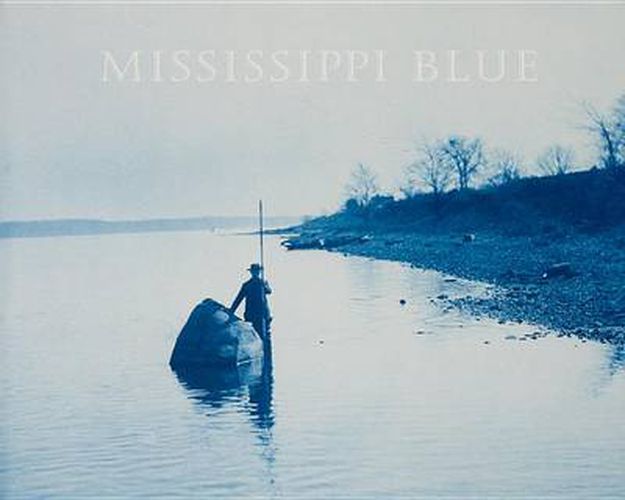Readings Newsletter
Become a Readings Member to make your shopping experience even easier.
Sign in or sign up for free!
You’re not far away from qualifying for FREE standard shipping within Australia
You’ve qualified for FREE standard shipping within Australia
The cart is loading…






The cyanotypes reproduced in Mississippi Blue come from an album of photographs taken by Henry P. Bosse for the Army Corps of Engineers. They show the Mississippi River between Minneapolis and St. Louis, and were taken from 1883 to 1892 as part of the Corps’ effort to document and understand the ever-changing river. Not much is known about Bosse. Born in Germany in 1844, he entered the United States in 1865 and worked in stationery stores in Chicago. At that time, stationers, in addition to selling paper and ink, were dealers of printed books, fine prints, and frames. Letters and cards suggest that Bosse liked to drink, sing, and play cards, but he was a sophisticated man by American standards, melding a European sensibility with his Midwestern creativity and leaving behind a landmark of cartography and a major work of American Impressionism.
$9.00 standard shipping within Australia
FREE standard shipping within Australia for orders over $100.00
Express & International shipping calculated at checkout
The cyanotypes reproduced in Mississippi Blue come from an album of photographs taken by Henry P. Bosse for the Army Corps of Engineers. They show the Mississippi River between Minneapolis and St. Louis, and were taken from 1883 to 1892 as part of the Corps’ effort to document and understand the ever-changing river. Not much is known about Bosse. Born in Germany in 1844, he entered the United States in 1865 and worked in stationery stores in Chicago. At that time, stationers, in addition to selling paper and ink, were dealers of printed books, fine prints, and frames. Letters and cards suggest that Bosse liked to drink, sing, and play cards, but he was a sophisticated man by American standards, melding a European sensibility with his Midwestern creativity and leaving behind a landmark of cartography and a major work of American Impressionism.